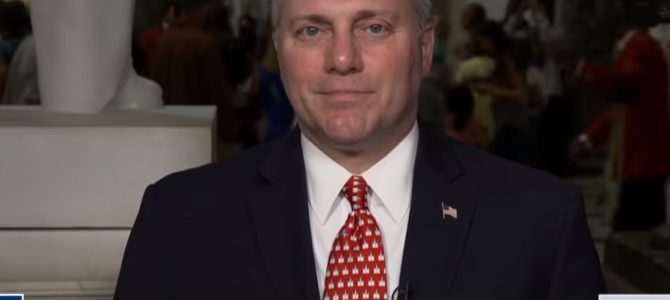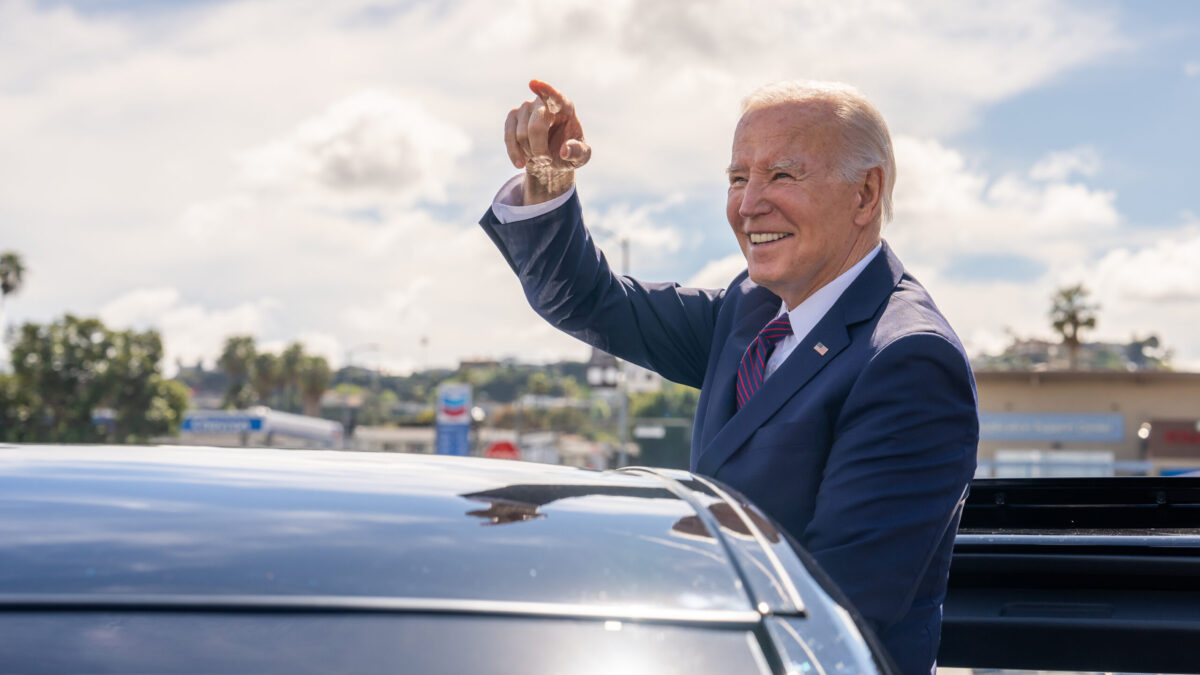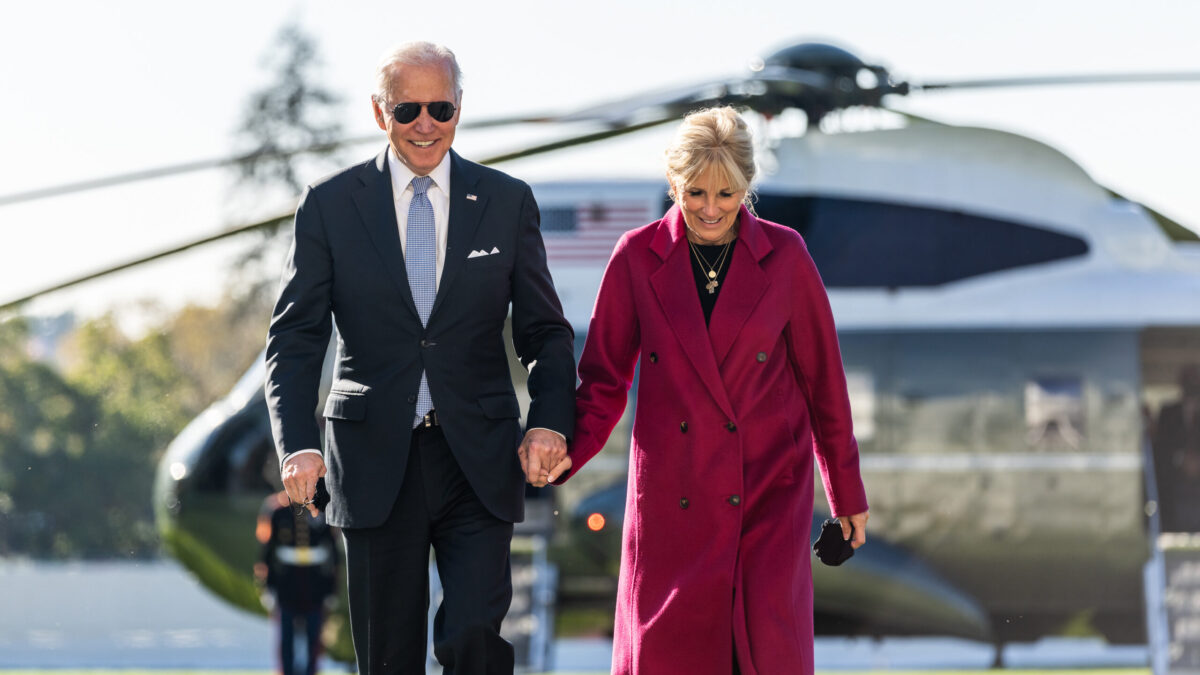
When a lone gunman shot House Majority Whip Steve Scalise (R., La.) on the morning of June 14 last year, I thought D.C. would fall apart.
It was the day before the annual Congressional baseball game — one of those increasingly rare events where Democrats and Republicans show the country that they don’t always hate each other — and the Republican team was practicing on a community diamond in Alexandria, Virginia.
At about 7:00 a.m., Rep. Jeff Duncan (R., S.C.) was leaving the field to get to a breakfast supporting anti-Islamic terror efforts, when he passed an older man watching the game from the side of the road.
“Hey, can you tell me who’s practicing this morning, Republicans or Democrats?” Duncan remembers the man asking.
“This is the Republican team,” Duncan said.
“Okay, thanks.”
Minutes later, gunfire punctured the air.
James T. Hodgkinson, a disillusioned Bernie Sanders supporter from southern Illinois, approached from the outfield near third base, firing his semiautomatic rifle in quick bursts. At first, the congressmen on the field thought the noise came from a firecracker or a car backfiring.
But when bullets whizzed through the chain link fence, kicking up sand on the other side, the team rushed for cover in the first base dugout. James Mika, a lobbyist assisting the team, ran to alert Capitol Police, who were parked only twenty feet from the field.
Hodgkinson hit him clean through the back. The bullet punctured Mika’s lung and exited through his chest. Capitol police officers rushed to help as his exposed chest bled on the concrete.
Someone called 911. The Capitol Police officers exchanged fire with Hodgkinson, hoping to draw his attention away from the congressman hiding in the dugout.
But not before he clipped Scalise. The congressman had turned away from his second base position to escape the gunfire, but his legs gave out when a bullet tore up the inside of his hip. Lying on the diamond, Scalise dragged himself toward the outfield, avoiding the spray of bullets by keeping low to the ground. His fellow lawmakers watched helplessly from their bunker.
After about 10 minutes, local police arrived and fatally wounded Hodgkinson. A helicopter flew Mika and Scalise (both in critical condition) to the hospital. Several others were hurt in the crossfire, but only sustained minor injuries.
When the story broke at about 8:00 a.m., I was sitting in a nearly empty newsroom. A passerby had taken a five-minute video of the incident, which all the major news networks were circulating with Zapruder film-like intensity.
As the morning hours rolled on, the story became more complicated. Hodgskinson was more than just a casual Sanders supporter. He had campaigned in the senator’s presidential primary — and kept up the fight even after Sanders lost to Hillary Clinton.
When Trump won the general election, Hodgkinson’s rhetoric became violent. He posted “Trump is a Traitor. Trump Has Destroyed Our Democracy. It’s Time to Destroy Trump & Co.” and “Republicans are the Taliban of the USA” on his Facebook page. According to his brother, Hodgkinson had moved to the D.C. area in March “to protest.” He had been living out of his van and showering at the Alexandria YMCA. No one expected he would attempt to kill a field full of Republicans.
But there I was — along with the rest of D.C. — watching that five minutes of more than 70 gunshots on an all-day loop. I had driven past that field on my way to meet my dad the night before. With the vanilla sky sunset splayed out over the Potomac, the green expanse on the side of Route 1 looked like any other suburban field. It didn’t take much to shatter the illusion.
By mid-morning Scalise was still in critical condition. The bullet was lodged in his body, and he needed serious surgery, even as he lost more blood from internal bleeding. Fearing the worst, Republican and Democratic lawmakers began visiting each other’s offices and appearing on live TV to express their solidarity with Scalise. Trump addressed the nation, telling Scalise that “you have the prayers not only of the entire city behind you, but of an entire nation and, frankly, the entire world.”
With the media pressure mounting, Sanders denounced Hodgskinson on the Senate floor. Democrat lawmakers explained to the press that despite their fiery rhetoric — or “vitriol” as everyone was calling it — about Trump and the GOP, they never intended to incite a mass shooting.
Everyone was rushing to rally behind Scalise. Around 10:00 a.m., House Speaker Paul Ryan addressed the House of Representatives.
“For all the noise and fury, we are a family. These were our brothers and sisters in the line of fire. These were our brothers and sisters who ran into danger and saved countless lives,” he said. “So before this House returns to its business, I want us to slow down and reflect, to think about how we are being tested right now. Because we are. I ask each of you to join me in resolving to come together … to lift each other up … and to show the country — show the world — that we are one House. The people’s House — united in our humanity. It is that humanity which will win the day. It always will.”
But in the early hours following the shooting, vitriol seemed to have the upper hand. The massive wave of nasty words swelling up from the past year came crashing down on Washington. People were pissed off. All of Trump’s taunts at Clinton when he won in 2016 and the resulting left-wing hysteria — stretched and replayed a million times over mass media — erupted in this horror. And a congressman who had nothing to do with it might die.
That afternoon, I left the office early to meet my family at a Nats game, anxiously checking my Twitter feed the whole metro ride down. As the Atlanta Braves trashed D.C. 13-2, we talked about what would happen if Scalise died in surgery or in recovery. Would it vindicate the Trump-fueled taunts about the evil Democrats? What sort of uprisings and protests would we see? How could a country, already so battered by unrest, recover from something so horrible as the assassination of the third-highest ranking member of Congress? The lack of news updates kept us in fear. No one knew if Scalise would make it through the day.
He did, thank God. What could have been the one of the greatest American political tragedies of the decade became a bond for people divided by ideological belief. The congressional baseball game went on as planned the next day, with record attendance. Players on both teams wore Louisiana State University hats to honor Scalise, and, although the Democrats trounced the Republicans, they lent the losers the trophy until Scalise recovered. Ryan and Minority Leader Nancy Pelosi joined in rare solidarity, telling CNN they were on “Team Scalise.”
The next day the news cycle rolled back to vitriol. Political life is just like baseball: When the game ends, it breaks your heart.
Several weeks ago, I visited the field where Scalise was shot. There are still bullet holes in the chain link fence and the first base dugout, eerie reminders of just how recent this all was. When I met him the next day at the Susan B. Anthony List gala, he was still walking on crutches. A man standing next to us remarked that it is a miracle Scalise is even alive, much less on his feet.
It is a miracle. But the greater miracle happened on June 14, 2017.









